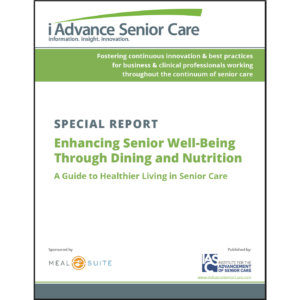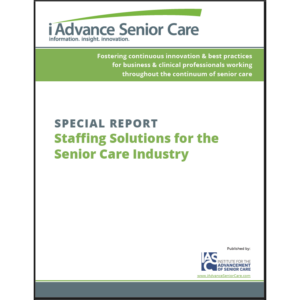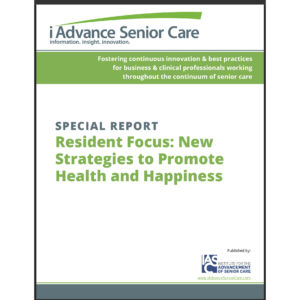Fecal incontinence
Fecal incontinence, an involuntary passing of stool, affects 45-50% of nursing home residents.
1-3 Dual incontinence (both fecal and urinary) is the second most common reason an elderly individual is institutionalized.
4 Nursing home residents who are incontinent have more urinary tract infections
4 and persons with fecal incontinence have a 22% greater chance of developing pressure ulcers.
Risk factors for fecal incontinence include: fecal impaction; loss of normal continence mechanisms due to local neuronal damage; impaired neurological control or anorectal trauma/sphincter disruption; conditions overwhelming the normal continence mechanism such as laxative use, diarrhea, colitis, or radiation; behavioral or psychological problems such as delirium, dementia, or severe depression; functional impairment related to hemiplegia or hemiparesis, impaired gait or arthritis; and, in rare cases, neoplasm. Although fecal incontinence is rarely related to a single factor,6 constipation and diarrhea are the most common causes of fecal incontinence. The elderly incontinent person has less rectal sensation and less sphincter strength than the person who is not incontinent.7
History and physical
An evaluation for fecal incontinence should include a history including when symptoms first started; history of previous surgeries, obstetrical injury, or radiation; existence of colitis; and a thorough review of prescription and over-the counter medications (see Tables 1 and 2). Patients who receive liquid medications orally or via feeding tube should be evaluated for the amount of sorbital they are ingesting as this is a common component of liquid medications. New onset fecal incontinence may be indicative of spinal cord compression, particularly if the patient has other neurological symptoms.
Anticholinergic agents |
Antidiarrheal agents |
Antiparkinsonian agents |
Antipsychotics |
Antihistamines |
Calcium channel blockers |
Calcium-containing antacids |
Calcium supplements |
Diuretics |
Iron supplements |
Nonsteroidal anti-inflammatory agents |
Opiates |
Sympathomimetics |
Tricyclic antidepressants |
Examination and testing
A physical examination should follow the history and should include a neurological exam, including testing for the presence or absence of the “anal wink.” The absence of this reflex indicates neural damage. The perineum should be examined for abnormalities and a digital rectal exam should be performed. Following the physical exam, diagnostic tests may be indicated. Since fecal impaction is a primary reason for fecal incontinence in the elderly, a plain radiograph is indicated to rule out an impaction. Flexible sigmoidoscopy, colonoscopy, anal manometry, electromyography, anal ultrasound, and magnetic resonance imaging are additional diagnostic tests that may be indicated (see Table 3).
Treatment
Treatment of fecal incontinence hinges on underlying etiology and severity of incontinence. Conservative therapy includes habit training (timed defecation), use of antidiarrheal agents if stool is too loose, and biofeedback. Loperamide is an effective antidiarrheal agent and is better tolerated by the elderly than alternatives such as diphenoxylate or codeine. Multiple studies have validated the effectiveness of biofeedback in treatment of fecal incontinence, leading to improvement in symptoms for at least 50% of patients. Motivated, cognitively intact patients have the best outcomes.4
Surgical interventions
When conservative interventions have failed and the patient has anatomic defects, surgical interventions are considered. The surgical procedures currently available include placation, direct apposition, or the overlapping anterior sphincteroplasty for sphincter repair. Another technique is artificial anal sphincter implantation. Sacral nerve stimulation or injections of collagen are also effective in select patients. When all interventions have failed, the patient should be considered for diverting colostomy if they have severe fecal incontinence.
Skin care and nursing interventions
Protecting the patient’s perianal skin and containment of incontinent stool are fundamental nursing interventions. Multiple cleansing and emollient products as well as barrier ointments are available to provide skin protection. The paramount principle is to protect the skin at the onset of fecal incontinence. Once damaged, it is difficult to heal skin in the presence of fecal incontinence. The patient should receive perineal care as soon after the incontinent episode as possible to remove the feces from the skin.
If the skin is already damaged, one technique for treatment is the “three-step process.”8 The first step is dusting denuded skin with ostomy powder or, if candidiasis is present, antifungal powder. The powder is then sealed with a non-alcohol skin barrier sealant (e.g., 3MTM CavilonTM No Sting, Smith & Nephew No-Sting Skin-Prep*). These two steps may be repeated several times to promote moisture absorption and skin protection. The third step is applying an appropriate barrier ointment. This process should occur after every incontinent episode. Once skin has epithelialized, ostomy powder should be discontinued and barrier ointment continued. At this point, use of skin barrier sealant is optional.
Fecal containment
Containment of incontinent stool protects perianal skin. Patients with diarrhea incontinent stool have a higher risk for skin breakdown due to diarrhea’s alkalinity. Using bed pads or an internal or external fecal management device is preferred to adult briefs that can create a humid environment, which alters the skin’s protective pH and can weaken the stratum corneum. If the patient is bedfast, ultra-absorbent pads or a fecal incontinence collector should be considered. When applied to intact perianal skin, the fecal incontinence collector contains either formed or liquid stool and protects perianal skin.
If the patient has severe diarrhea, an internal fecal management device should be considered. Three FDA-approved devices (Barb Dignicare TM SMS, ConvaTec Flexiseal® FMS, Hollister Actiflo) are available. These devices may be left in place for 29 days. Evaluation for and ongoing maintenance of the devices is required. Some balk at the average $350 expense of the devices; however, if left in place 29 days, the cost is $12 daily. This is less expensive than multiple linen changes or a facility-acquired case of incontinence-associated dermatitis, a facility-acquired case of c. difficile colitis, or a facility-acquired pressure ulcer. Other devices, such as foley catheters or rectal tubes, are used off-label for management of diarrhea fecal incontinence. However, the use of these off-label devices is not recommended because FDA-approved devices are readily available.
Antiarrhythmics |
Antibiotics |
Antihypertensive agents |
Chemotherapeutic agents |
Colchicine |
Laxatives |
Magnesium-containing antacids |
Nonsteroidal anti-inflammatory agents |
Poorly absorbed sugars (sorbital and mannitol) |
Prokinetic Agents |
Summary
Fecal incontinence plagues many residents in skilled facilities. With appropriate assessment and management, fecal incontinence incidence and severity can be decreased. Maintaining resident dignity, containing stool, and protecting the resident’s perineal skin are vital nursing functions.
With appropriate assessment and management, fecal incontinence incidence and severity can be decreased.
Test | Indication |
Plain radiography (x-ray) | Rule out impaction |
Flexible sigmoidoscopy | Examine colorectal mucosa for structural abnormalities |
Colonoscopy | Colon cancer screening |
Anorectal manometry | Evaluate anorectal function, sphincter tone, and rectal compliance |
Electromyography | Determine integrity between distal pudendal nerve and anal sphincter |
Anal ultrasound | Identify internal and external sphincter defects |
Magnetic resonance imaging | Identify internal & external sphincter defects at higher resolution |
Mary Arnold-Long, MSN, RN, CRRN, CWOCN-AP, ACNS-BC, is a Clinical Nurse Specialist for Drake Center in Cincinnati, Ohio. Mary has more than 25 years of nursing experience. In addition to clinical practice, she is a member of the Wound, Ostomy and Continence Nurses Society, the Society for the Advancement of Wound Care, the Beta Iota Chapter of Sigma Theta Tau, and the Association for Rehabilitation Nursing. For more information, call (513) 418-9483 or e-mail
References
- Dey AN. Characteristics of elderly nursing home residents; data from 1995 National Nursing Home Survey. Advance data from vital and health statistics; no. 289. Hyattsville, MD; National Center for Health Statistics, 1997.
- Furmer NR, Jesudason V. Fecal incontinence in Wisconsin nursing homes. Diseases of the Colon & Rectum 1998; 41 (10): 1226-9.
- Chassagne P, Landria I, Neveu C, et al. Fecal incontinence in the institutionalized elderly: Incidence, risk factors & prognosis. American Journal of Medicine 1999; 106:185-90.
- Tariq SH Morley JE Prather CM. Fecal incontinence in the elderly patient. American Journal of Medicine 2003; 115:217-227.
- Maklebust J & Magnan MA. Risk factors associated with having a pressure ulcer: a secondary analysis. Advances in Wound Care 1994, 7 (6): 25-42.
- International Foundation for Functional Gastrointestinal Disorders ,www.aboutincontinence.org/site/about-incontinence, accessed 6/3/2010.
- Newman DK. Bowel incontinence. https://www.seekwellness.com/incontinence/bowel_incontinence.htm
- Noftsger T, Campbell D, Green B, Arnold-Long M. Clinical case series: Management of fecal incontinence-associated dermatitis (IAD) using a three-step technique. Journal of WOCN 2010; 36 (3S-59S.
Long-Term Living 2010 October;59(10):50-53
I Advance Senior Care is the industry-leading source for practical, in-depth, business-building, and resident care information for owners, executives, administrators, and directors of nursing at assisted living communities, skilled nursing facilities, post-acute facilities, and continuing care retirement communities. The I Advance Senior Care editorial team and industry experts provide market analysis, strategic direction, policy commentary, clinical best-practices, business management, and technology breakthroughs.
I Advance Senior Care is part of the Institute for the Advancement of Senior Care and published by Plain-English Health Care.
Related Articles
Topics: Articles , Clinical











